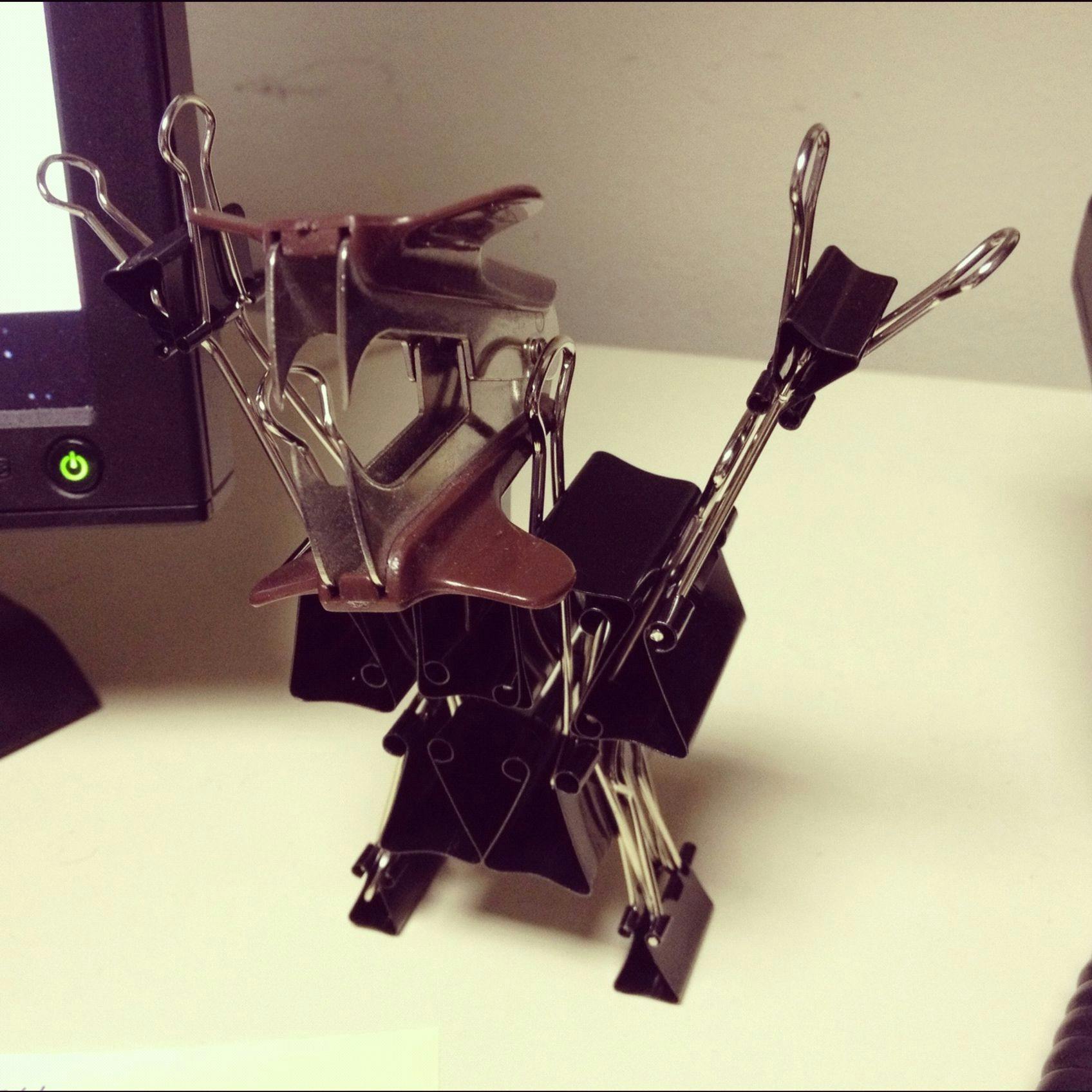
Michael Mongon
Feb-22, 2024 15:47
The Autonomous Team

Celebrate the Wins, Office Robot Does, by: Michael Mongon
The COVID lockdown brought tech many things, most of them not pleasant. What pleasant things it did bring us was time to bold with our family, for some of us, learning what it was like to be the bag of chips, and for tech the proof that much of our job can be done remotely. I won’t speak to every profession, but even the individuals I know who advocated for always being in an office saw the perks of working from home.
The little two-week trial for all of us turned into a month, and the months turned into years. Within those years we learned a lot more. We learned the canals of Venice can be crystal clear if boats stop and for many of us our productivity increased. You weren’t wrong, statistically, it did, and science has known it for years. https://www.gsb.stanford.edu/faculty-research/working-papers/does-working-home-work-evidence-chinese-experiment
It wasn’t perfect. I’m not here to take a hard stance on WFH, In-office, or even hybrid approaches. They can all be beneficial if used in the right ways. What I am going to take a hard stance on is the issues that arise out of questioning talented individuals and needing to track performance in a way that questions, if they are working hard, is not going to be as successful as setting up an autonomous team. It doesn’t matter if they are co-located or spread across the globe, an autonomous team will be more successful.
If you have a question as to whether someone’s work ethic is adequate for the monetary compensation they receive, then you should question first your ability to hire talented individuals. Trust is two-sided. Unfortunately, trust is also fast to break and time-consuming to fix. In this case, the individual trusts that a paycheck will continue to come in at the designated pay period, it is reciprocated by putting in the work until then.
Good leaders must trust their employees because they trust that they know how to build an autonomous team. The autonomous team is self-sufficient, only bringing in their leader to be a force multiplier when there is an issue. It could be a puzzle they have not come up against before or help with looking at a problem from another angle. Calling upon each other shouldn’t be seen as a negative though as collaborations are always positive.
How is performance then measured?
Get the terrible ideas out of your head. We know that measuring lines of code or the number of commits is by far the worst way to track an engineer. You don’t know this, yikes. Trust me it's bad. and I’ll take two seconds to explain it. Engineers understand game mechanics and if they know they are measured by lines of code or number of commits then they will create more lines of code and more commits. More commits and more lines of code do not build a better product, nor do they prove anything about an ‘engaged’ team. It just means they saw the game metric used to measure them and they are trying to beat that metric.
This isn’t to say that those sorts of metrics can’t give room for meaningful conversations just that it’s not a direct correlation to a well-performing team. The opportunities are if a manager sees two individuals working on the same type of code and one contributes 300 lines of code, and the other 20 lines, it may be worth looking into it. However, it needs to be the same type of code. Two different projects, languages, or areas will likely yield different code lengths. With the similar work, it could show opportunities for shared learning or a better understanding for yourself and the rest of the team. It’s a conversation starter, just not useful as a measurement.
What a worthwhile measurement is, is what the teams' agreed goals are and progress to them. OKRs and KPIs are important for this because the goal of how those are set are distinct measurable goals that the entire team should be agreeing upon. These types of goals are by definition measurable in a way that the effort put towards them can show results over time. This is why I prefer operating in sprints even if the team for whatever reason has to deliver is a big waterfall of deployment. 2-week sprints are my personal ideal for this tracking because it takes only a month or two to get your metrics understood and gives you time to refine that when you learn along the way.
Types of Things to Measure
Gamification
Gaming the system will happen. Remember you hired smart talent. Smart people know how to win if they want to. This also means that your reward or discipline of success and failures needs to be about accountability to the team and its success. Work is a team sport, not the action hero or brainiac lead movies that are all pure fairytales; fun to watch though.
The Goal of Measurement is Autonomy
Some could say a leader's ultimate goal is to work themselves out of a job. That is the ideal of a team that is autonomous after all. They know and understand enough that the leader does not need to be pulled into every minute of conversation. Luckily for the leader, there is always more work to be done. Sorry, if you hoped for one day leaning back with a mai thai while you collected a paycheck, but that probably won’t happen until retirement.
Measurements of the team should always be performed not to look for success or failure, but for learning something. That is why the suggested measurements are around how well the team functions without the leader's input. This will tell you if the team is operating in the method of becoming more and more autonomous. The metrics are a better representation of the value the team provides and why autonomy is valuable to the company you are at.
The importance is that this measurement is transparent and agreed upon by both parties.
My Autonomous Team is Missing Deadlines
If you’ve followed this advice, then there is a strong likelihood that your team is off track because they don't understand the project or how they fit into it. This is great news, because it's not their fault, it's yours. It's your fault because as a leader you have the opportunity to explain how they fit in and the value they are bringing to the project. There could be infinite reasons as to why they misunderstood the first time the project was explained, but it will be a learning experience for both of you.
Explain the project, again, but most importantly, take the time and listen to the team. Understand where their gaps are in understanding it. Make sure you instill the value that they bring with the success of the project. When they understand, you will see a distinct difference in how they tackle the problems.
Take a peak at my post about being an active listener if you struggle to hear what your team is telling you. Listening is one of the most important parts of being a leader.
Does this mean I can’t measure an individual?
Of course, an individual can be measured, but they should be measured in their impact on the team as a whole. Much like a team has an impact on the entire organization, an individual has an impact on the team. It just takes much more effort to see their impact.
I’ll come back in a future post to all of the right ways to help motivate and coach individuals. This post is about the autonomous team through, so stand by.
Conclusion
Measuring performance in a remote or hybrid work environment requires a shift in mindset from traditional methods. Rather than focusing on individual metrics like lines of code or number of commits, effective leadership entails fostering autonomy within teams and establishing clear, meaningful goals aligned with the organization's objectives. By prioritizing trust, accountability, and open communication, leaders can empower their teams to thrive independently while achieving collective success. Embracing a holistic approach to measurement not only enhances team dynamics but also cultivates a culture of continuous learning and improvement. As we continue to adapt to evolving work paradigms, let us remember that the true measure of success lies not in arbitrary metrics but in the collaborative achievements of autonomous, empowered teams.
